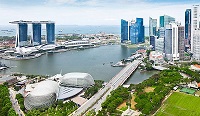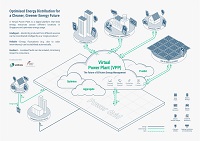A Singapore Government Agency WebsiteHow to identify
Official website links end with .gov.sg
Government agencies communicate via .gov.sg websites
(e.g. go.gov.sg/open).Trusted websites
Secure websites use HTTPS
Look for a lock ( )or https:// as an added precaution. Share sensitive information only on official, secure websites.
IN THE letter, "Strange that oil prices not linked to transport fares" (my paper, Dec 29), Mr Teo Kueh Liang commented that the "methods of calculating electricity tariffs are inconsistent and not transparent."
We would like to clarify that the formula for the determination of the electricity tariff is published on the Energy Market Authority (EMA) website. The formula has been in place since 2004. Based on this formula, the tariff is updated every quarter to reflect changes in the cost of fuel, as well as the cost of generating and delivering electricity to households.
The EMA is now reviewing the tariff-computation formula to see how it can be further improved for the benefit of consumers. We thank Mr Teo for his feedback and invite him to contact us directly if he needs further clarification.
Strange that oil prices not linked to transport fares (My Paper)
I REFER to recent news reports on how a fall in oil prices has affected energy businesses.
Whenever public-transport operators submit proposals for fare increases to the Public Transport Council, an increase in oil prices has always been one of the reasons cited for rising operational overheads.
It was therefore puzzling when Transport Minister Raymond Lim said recently that there is no direct correlation between falling oil prices and a drop in public-transport fares.
Oil prices are expected to head south, and consumers will be expecting fares and electricity tariffs to drop.
While electricity tariffs are set to fall from January to March next year, the methods of calculating the tariffs are inconsistent and not transparent.
There has also been no sign that fares will be cut.
A challenge for the authorities will be getting the public to wholeheartedly accept that the arguments behind retaining current fares and revising electricity tariffs are fair and reasonable.
Mr Teo Kueh Liang















